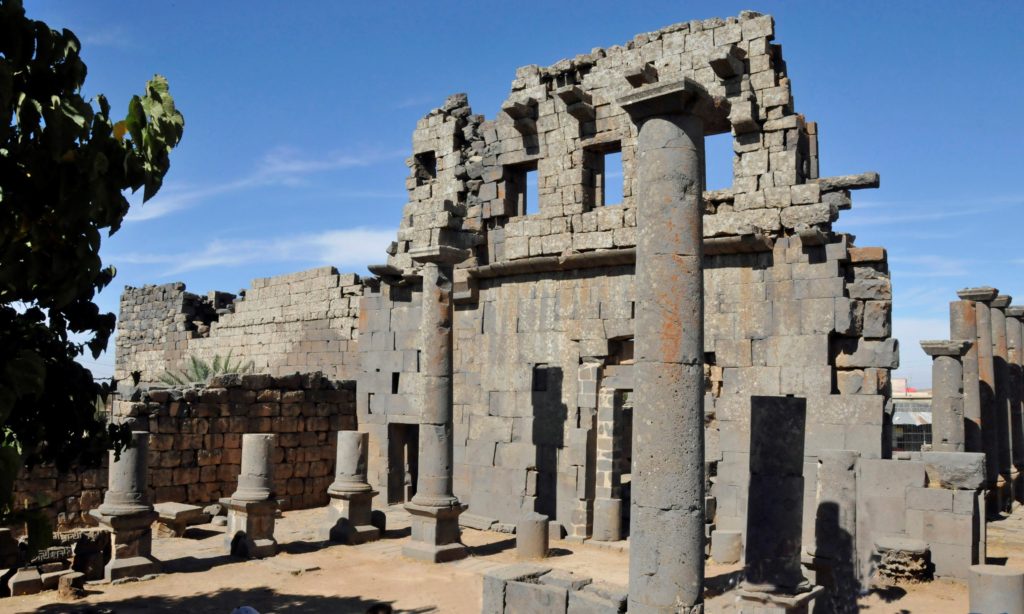
Qanawat, previously called Canatha, was once the most important city in an area in southwest Syria known as Jabal al-Druze. Its remarkable ruins reflect the city’s importance to Romans and early Christians.
Canatha/Qanawat is on the western slope of a volcanic plateau halfway between Damascus and Amman, both among the world’s oldest continuously inhabited cities. Canatha is probably the Biblical Kenath, captured for the Israelites by Nobah, a Manassite. In 63 B.C., Roman General Pompey conquered the surrounding area and made Canatha, along with Damascus and Amman (Philadelphia), one of cities of the Decapolis. These 10 autonomous cities took on the look of Rome, with column-lined streets, baths, temples and theaters. According to the Bible, many followers of Jesus came from the Decapolis, dominated at the time by Gentiles. By the fourth century, Canatha was the seat of a Christian bishop and a popular pilgrimage destination. Bishop Theodosius of Canatha attended the Council of Chalcedon in 451 A.D., called to decide the nature of Jesus. When the Muslims conquered the area in the seventh century, Canatha began to decline and was largely abandoned by the eighteenth century.
Today, Qanawat has a population of about 8000, most of them Druze, a minority religious group for whom the surrounding region was named. A 300-acre site surrounded by the city includes a number of partially reconstructed structures from the Roman and early Christian eras, including a Roman cistern, a theatre, a nymphaeum and temples to local and Roman gods. The most famous ruin, called El-Sarai or Seraya, was built as a Roman temple in the second century and features an atrium with 18 columns and a colonnaded portico. The 70-foot-long building was converted to a Christian basilica in the fourth century. Reflecting its importance to Christians, El-Serai includes a Greek-inscribed stone sarcophagus displaying a cross.
Comments are closed.